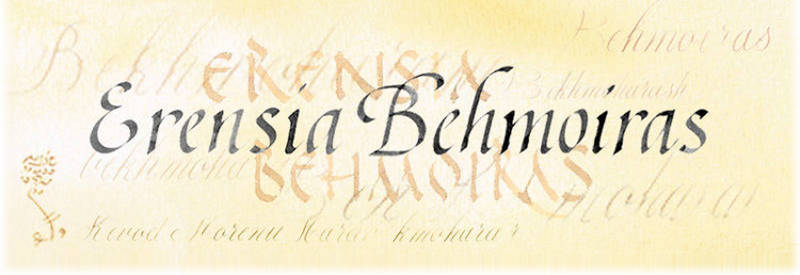Temisoara Versus Evora
By Raphael Ventura
The immediate assumption of a Sephardic family is that its origins are in Spain.
There are several reasons for us to believe that this was indeed our origin:
- We speak Ladino in the family for as far back as we remember
- The Appel – Meshulam branch has a definite recollection that the origin was in the city of Evora, now in Portugal, then in Spain, 500 years ago.
- The De Soria Letter to Alberto Behmoiras, states that our origins are in the expulsion from Spain.
- Raphael Cohen, of the Sirius-Behmaras branch says that his mother saw the name Behmoiras in a synagogue of Toledo, dated to that old period.
- The “lakerda folk story” which speaks of a fisherman on the coast of Malaga whose name was Behmoiras, and who invented the lakerda. It also says that this legend is carved? written? on a wall of the fish market of Toledo.
On the other hand, there are equally good reasons to claim that the origin of our family is from Ashkenaz, and the family is Ashkenazi.
- The name Behmoiras is not similar to any names of Spanish Jews.
- We know the name’s meaning and formation, and it is purely Hebraic.
- The old historians of Ottomanic Jewry are all unanimous in postulating that the head of the family was Isaac Ashkenazi an Eskenazi rabbi of Ashkenaz (Temisoara-Hungary, Poland).
- The main family legend, that of Sabbetay Zevi, is linked to this Eskenazi theory.
- Those historians take the pains to explain how it came to pass that the family changed from being Eskenazi to become Sephardic.
- I was not able to find any evidence for the existence of the name any earlier than the date that is claimed to be that of the arrival of Rabbi Askenazi with his 2 years old boy to Edirne. (1668). This is almost 200 years after the expulsion from Spain.
I believe that the second theory is correct. However, the issue is delicate. It would be sufficient to discover one single instance of the name that can be proved to be earlier than that period, to destroy the entire theory.
My reasons are the following:
- The Eskenazi origin is harder to believe than the Sephardic one. So if an historian states that the family was Eskenazi, he is bound to have checked it and double checked it.
- There is no scholarly publication that claims that the family originates in Spain.
- The name was neither Behmoiras nor Behmoiram in the beginning. It developed to become what it is today from the original Behmoharar. We understand exactly how this development could have taken place. The earliest instance of the name being Behmoaras is in mid 19th century. Whereas, those who claim it is Sephardic, believe that it existed in its fully developed form ever since the fifteenth century. One cannot accept this kind of anachronism.
- The reference to the city of Evora can be explained in the following way. The Jewish population of Edirne, almost all of them Sephardic and a few Karaites, was subdivided into 13 congregations. Each congregation had its own synagogue. There existed 13 synagogues in the city, all of them now destroyed. These synagogues were given names: The names were as follows: Gregos (the oldest), Budoun (Buda from Budapest = Hungarian immigrants), Ashkenazi, Italian, Apullian, Sicilian, Aragon, Catalonia, Evora, Guerush, Majorca, Portugal (the smallest), Toledo. Jewish encyclopedia on line. Those in red were under the jurisdiction of the Behmoiras dynasty of grand rabbis; the others belonged to the Gueron dynasty. IF the Appel-Meshulam branch belonged to the Evora congregation, their descendants could well have developed a tradition which assumes (erroneously) that they were Evora Jews. In reality, they were Evora congregation Edirnelis.
- As for the “lakerda legend”, the name of the fisherman Behmoiras mentioned in it is Adi Behmoiras. Now, Adi is a very recent Israeli name meaning “piece of ornament”. This is not what is meant there. It is the Turkish word for “NAMED”. Hence, the legend is not Spanish, but Turkish. If a Sephardi Turkish story teller would want to create a legend in order to suggest a Ladino etymology for lakerda as being “la querida”= the beloved one, he would have to locate the events in Spain and date them before the expulsion, when Jews prospered there. This etymology is patently wrong.
- There remains the name Raphael Cohen’s mother told him she saw in a Toledo synagogue. This is something that has to be checked further, since the synagogue is still there. The Toledo Jewish Museum does not have any knowledge of the name Behmoiras.
